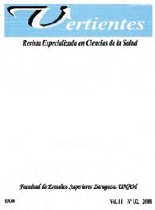Influenza epidemic: what is it and what to do?
Main Article Content
Abstract
Influenza is a highly contagious respiratory disease caused by a pathogen that continues to evolve and threaten both veterinary and human public health. Influenza A viruses are continually undergoing molecular changes through mutations, reassortment, and, in rare instances, recombination. Influenza A viruses can infect large numbers of warm-blooded animals, including wild birds, domestic birds, pigs, horses, and humans. These viruses can switch hosts to form new lineages in novel hosts. The most significant of these events is the emergence of antigenically novel influenza A viruses in humans, leading to pandemics. It is very likely that the influenza virus (AH1N1) that lead to the 2009 pandemic will continue circulating into the world in the coming years.
Article Details
How to Cite
Arias, C. F., & López, S. (2011). Influenza epidemic: what is it and what to do?. Vertientes. Revista Especializada En Ciencias De La Salud, 12(1-2). Retrieved from https://revistas.unam.mx/index.php/vertientes/article/view/26713
Citas en Dimensions Service

Vertientes by Universidad Nacional Autónoma de México is licensed under a Creative Commons Reconocimiento-NoComercial-SinObraDerivada 4.0 Internacional License.
Creado a partir de la obra en http://www.zaragoza.unam.mx.


